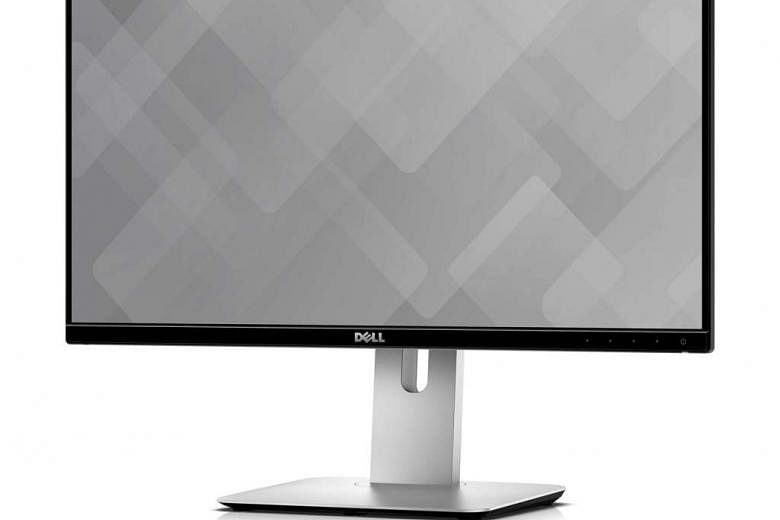Office workers are probably used to the idea of connecting their laptop to a monitor for a more comfortable viewing experience while at their desks.
Dell's latest monitor takes it further by removing the physical cable. The UltraSharp 24 Wireless Connect Monitor (U2417HWi) can wirelessly duplicate or extend the screen of a compatible Windows laptop.
If that is not impressive enough, this monitor can simultaneously mirror the screen of a compatible Android smartphone using the Dell Wireless Monitor app (available from the Google Play store) and present it in a picture-in-picture (PiP) window like TV sets.
In short, you can view the screens of two separate devices at the same time.
In addition, you can connect a keyboard and mouse to the monitor's USB ports to use these peripherals to edit content on the connected laptop and smartphone.
Having a physical keyboard makes it convenient to reply to instant messages or e-mail on your smartphone, compared with tapping with your fingers.
There are some limitations, though. For one thing, it is restricted to connecting to a Windows laptop and an Android smartphone. It cannot connect wirelessly to two Windows laptops or two Android devices. It does not support Apple devices or Sony smartphones.
The PiP mode does not work if you connect the monitor to a Windows laptop via HDMI.
There are also hardware requirements to meet. Your laptop must have a fourth-generation Intel Core processor or newer, with a Wi-Fi 802.11ac adapter from Intel, Broadcom or Qualcomm. Your smartphone must support the Miracast wireless display standard.
These limitations are not adequately conveyed on the monitor's product webpage, but Dell has an online guide explaining them in detail, including troubleshooting tips.
The tips came in handy when my Nexus 5 smartphone crashed repeatedly while I was trying to connect it to the monitor. Reading the online guide helped me understand why the Razer Blade Stealth laptop did not work with the Dell display - the Stealth has a non-supported Wi-Fi adapter from Killer Networking.
Besides the hardware incompatibility issues, there was a slight lag when I tried to type or use the mouse in the PiP window.
-
TECH SPECS
-
PRICE: $699
RESOLUTION: 1,920 x 1,080 pixels
ASPECT RATIO: 16:9
BRIGHTNESS: 250 cd/m2
RESPONSE TIME: 8ms
PANEL TYPE: In-plane switching (IPS)
CONNECTIVITY: HDMI, 4 x USB 3.0 downstream, 1 x USB 3.0 upstream, headphone jack
RATING
FEATURES: 4/5
DESIGN: 4/5
PERFORMANCE: 3/5
VALUE FOR MONEY: 3/5
OVERALL: 3/5
The monitor itself has an ultra-thin bezel, dubbed InfinityEdge, that makes the U2417HWi ideal in a multi-monitor setup.
Colours were found to be accurate on the monitor's in-plane switching (IPS) display using a colourimeter. The monitor was also tested to have 96 per cent coverage of the sRGB colour space.
Touch buttons at the lower right bezel are used to navigate and control the monitor's on-screen display settings. There are seven pre-set profiles, such as Movie and Game, that can be enabled quickly with two button presses.
•Verdict: This is a good monitor, but I am not convinced by its wireless display feature. Dell has a near-identical model - U2417H - that lacks the wireless feature and costs $429 instead of $699.


